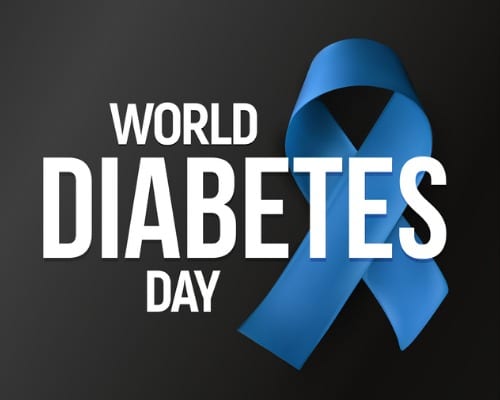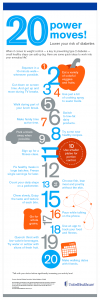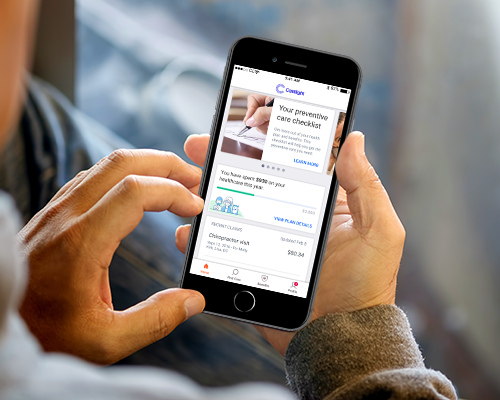In the following Forbes article, 14 of the most plugged-in travel experts and influencers give recommendations on places that are on their radars for 2019. Read on for their picks, which range from beach resorts to mountain towns to some up-and-coming cities that might surprise you.
- Fort Lauderdale, FL
Chosen By: Sarah Funk is a travel show host and blogger. She is frequently seen on Travel + Leisure and has been to over 40 countries.
Why: The beach town has transformed into a luxurious getaway for the hip and young. Its sandy shores are crowd-free, with swaying palm trees and miles of peaceful beaches like Pompano and Lauderdale-By-The-Sea. Sophisticated hotels such as the Conrad Fort Lauderdale Beach dot the beaches and new luxury hotels are on the way, including the Four Seasons Hotel & Private Residences, slated to open in 2020. Millennials can also find a place they will love at the W Hotel or Plunge Hotel. Fort Lauderdale’s culinary scene is a masterpiece, with upscale eateries serving dishes from around the world and new high-end restaurants continuing to emerge. Have a meal at Valentino Cucina Italiana, Louie Bossi’s or Monkitail and your taste buds will thank you.

2. Santa Fe, NM
Chosen By: Darley Newman is a globe-trotting TV host, writer and producer of Travels with Darley and Emmy Award-winning Equitrekking on PBS and Amazon Prime.
Why: Santa Fe never goes out of style, but with an ever-growing adventure travel scene, a slew of special events and restaurants and spas that nurture the body and soul, it should be on your 2019 travel radar. Authenticity continues to resonate as a hallmark of experiences in Santa Fe, from walking trails once trod by the ancestral Pueblo people to the red chile peppers of Chimayo cooked up at James Beard Award-winning Rancho de Chimayó. In 2019, travelers who like to get active may enjoy joining the 34th annual Santa Fe Century, a spring cycling event open to all levels of riders along the Turquoise Trail, or heading out into the Santa Fe National Forest. Santa Fe’s Margarita and Chocolate Trails are there to replenish you after your adventure vacation.

3.) Nashville, TN
Chosen By: Nneya Richards is a speaker and travel blogger at ’N A Perfect World, a curated intersection of travel, food, fashion and geopolitics inspired by the global-citizen lifestyle of the millennial. Nneya aims to empower young people, especially those of color, to travel, as she believes it is through exploring the world that we will bridge cultural gaps and misunderstandings.
Why: Always a Mecca for the music industry, this Tennessee city has been bubbling even more so over the last few years, making a name for itself in not just music, but art, innovation and fashion. This, coupled with the building boom generated by the publishing and healthcare industries, makes Nashville an easy shoe-in for that next hot American city. A bachelor and bachelorette party epicenter, Nashville is no stranger to tourists outside of the music industry, but that Southern hospitality with a twist of rock and roll is attracting a new breed of cool kids with boutique hotels like Dream Hotel, scheduled to open in February 2019, leading the way. Explore cool neighborhoods like Germantown and be sure to stop at Nashville staple, Monell’s, and bring back some biscuits!

4) Fort Collins, CO
Chosen By: Olivia Balsinger has utilized her global perspective to manifest her career as a travel and broadcast journalist. Olivia has visited 96 countries, has been published in multiple international print and online outlets for travel and lifestyle, was honored as InterContinental Group’s Latin America “Journalist of the Year” (2017) and has been a panelist or host for major travel conferences like New York TravFest. She is also a matchmaker/relationship coach and can be seen on Bravo.
Why: Fort Collins, nicknamed FoCo, is a happening new travel destination whose energetic art scene and entrepreneurial spirit makes the hour-long drive from Denver well worth it. I strolled its streets as if it were a movie scene. An invigorating creative spirit permeates its quirky, niche culture and spreads across to the pristine natural landscape that frames the area. FoCo nurtures a large “maker” culture, offering delicious brews that utilize the freshest of local ingredients in hot spots like New Belgium Brewery. It’s also a hip place that continues to grow as a hub for artists and creatives, who value the significance of community as much as the solace of the natural environment. Try Farm Fusion, with farm-to-table delicacies that come with interactive instruction. FoCo is also packed with ample adventure — hiking, fishing, whitewater rafting — within minutes of town.

5). New York
Who: Erin Lindsey is the creative force behind Escape Brooklyn, a travel resource for New Yorkers looking to escape the hustle and bustle of New York City.
Why: New York City has always been the show-stealer of New York State; and in 2019, as hosts of the World Pride Celebration — along with the expansion of MoMA, the opening of the Statue of Liberty Museum and the unveiling of the new retro-chic TWA Hotel at JFK — that’s not likely to change. But outside the Big Apple, New York’s mid-size cities of Rochester, Albany, Syracuse and Buffalo have all been burgeoning as of late, too. Explore the “crown city” of Buffalo, with its $50 million restoration of Frank Lloyd Wright’s Martin house, its parks designed by Frederick Law Olmsted (of Central Park fame) and its wing-centric food scene. Or catch an event at the newly opened National Comedy Center, an hour away in Jamestown. It’s also the home of Bethel Woods – a.k.a., the site of Woodstock – which will be celebrating its 50th anniversary this summer with tons of events. While visiting the region, don’t miss culinary highlights like The Heron, Northern Farmhouse Pasta or The Kaatskeller. The best lodging can be found in a Red Cottage Inc.luxury vacation rental, at any of the four boutique hotel options from Foster Supply Hospitality or at Scribner’s, a Catskills classic that just reopened after a major overhaul.

6) Jackson Hole, WY
Chosen By: Jenn Rice is a freelance culinary art and travel writer for digital outlets such as Vogue, Domino, Sunset, Food & Wine, Extra Crispy and more. She spends the majority of her time galavanting around the globe in search of interesting bites and chefs, lesser-known wine regions and up-and-coming cities and destinations.
Why: Jackson Hole Mountain Resort has it all — the country’s most applaudable terrain and magnetizing attractions. Jackson Hole Mountain Resort’s RPK3 is set to be Teton Village’s most happening aprés spot, with craft punch and savory bites. If vino is your jam, the team at Enoteca showcases interesting finds from around the world. During the 2018-19 ski season, the husband-wife duo behind nearby hot spots Streetfood at the Stagecoach and Butter Cafe will open a pop-up coffee shop in the Aspens. Jackson Hole Food & Wine’s slopeside winter fest (February 28 to March 2) returns with guest chef Richard Blais, local Teton Village chefs and celebrated mixologists, winemakers and tastemakers from near and far. If you’re in town, grab a spicy Mexican hot chocolate from Coco Love, helmed by master chocolatier Oscar Ortega, and peruse local photographer Tuck Fauntleroy’s Waterline series, capturing remote Yellowstone rivers during a precise window of time during spring, at Tayloe Piggott Gallery. Also keep an eye out for pop-ups from Hide Altitude: Their cowhide bags should be on everyone’s must-get list. Save room for a meat-filled sandwich from Sweet Cheeks Meats and a few cold ones at the Roadhouse Pub & Eatery — a new gastropub-meets-test kitchen where beer fanatics get the chance to test new brews before anyone else. Where to stay? Featuring artwork by local artist Amy Ringholz, Four Seasons Resort Jackson Hole is a solid bet if you’re seeking a snowglobe-like stay and shredding in a pair of the resort’s exclusive Sego skis. Or check out the Anvil Hotel, a hip boutique hotel in the heart of town with a mercantile selling warm-weather goods, spiked hot chocolate libations from New York City’s Death & Co., whiskey tastings, cookie classes with Lady in the Wild West and Glorietta, an Italian trattoria that’s arguably the best eatery in town.

7.) Winston Salem, NC
Chosen By: Becca Ingle is a local North Carolina native and family travel blogger. She is the founder of BeccaIngle.com, where you can read all her travel guides. Follow her on Instagram (@BeccaIngle).
Why: There is nothing like Southern hospitality, and you will definitely find that in the heart of Winston-Salem. The walkable downtown continues to grow, with more than $1.5 billion invested into downtown revitalization over the last decade. Visitors can enjoy a taste of Winston-Salem, thanks to seven craft breweries in a one-mile radius, more than 80 locally-owned restaurants and cafes (many of which are women-run) and an array of live music venues, eclectic art galleries and innovative cocktail lounges. In 2019 the largest National Black Theatre Festival returns (July 29 to August 3), along with the Academy Award qualifying Riverrun International Film Festival (April 4-14) and the Winston-Salem Open (August 17-24.) The Yadkin Valley Wine Region has more than 45 wineries located both downtown and within 15 minutes to an hour’s drive away. With styles varying from French hybrid and Italian, to North Carolina’s native muscadine, there is a wine for every palate, whether amateur or aficionado. While in town, take a short drive to Divine Llama Vineyards and have a picnic. Make sure to bring a bottle of their “in a heartbeat” wine home — you’ll be craving it. History buffs will appreciate the 250+ years of history that Winston-Salem has to offer, including sites like Reynolda House Museum of American Artand Old Salem Museums & Gardens. Stay at The Kimpton Cardinal Hotel, situated just steps away from all the action. The chic rooms, Art Deco entryway and basement equipped with bowling, basketball and an adult-sized slide will only add to the charm that you’re bound to find in Winston-Salem.

8.) Lancaster, Pennsylvania
Chosen By: Karen Loftus is a luxury travel, lifestyle and adventure writer. Her work has appeared in Vogue, Architectural Digest, Robb Report and American Way, among others. She is a women’s travel expert and consultant. The once international comedian speaks at conferences and events around the world about the influence of women in businesses and women’s empowerment. She recently launched an all-women’s travel company, Women’s Adventure Travels. Her bespoke adventures celebrate women of distinction and influence and are geared for women with a sense of humor and a sense of adventure.
Why: With close proximity to Baltimore, Washington D.C., Philadelphia and New York, this hip little city is on the radar of everyone from foodies to families and is perfect for a weekend retreat. New openings are popping up all over the city, alongside the classics. High-end diners will have over 400 wines to chose from at the newly opened Amorette, where the tower of charcuterie is sure to impress. For true Lancaster lure, the Central Market is a must, as the longest continuously running farmer’s market in the U.S. The ethnic diversity in the city is reflected in the stalls, alongside Amish fare. Shot & Bottle, another new outpost in Penn Square, is a top spot celebrating Pennsylvania spirits and craft brews. For cultural bites, head to Queen Street. On the first and second blocks of North Prince Street (also known as Gallery Row), you’ll find the Freiman Stoltzfus gallery and other world-class artists. The 300 block of Queen is lined with chic boutiques, including the newly reopened Telltale Dress — one of the best curated vintage shops you’ll find anywhere. For mid-century modern madness, head to Space’s new space, just off Queen. For a cinematic spin, Zoetropolis‘s new theater is abuzz, with a restaurant and bar on the horizon. Top off your tour with a classic cocktail and classic ambiance at The Horse Inn. It’s not tryingto be a speakeasy. It actually was a speakeasy, horse stalls and all. Chic sleeping can be done around the corner at the Cork Factory Hotel.

9.) Palm Springs, California
Chosen By: Lindsay Silberman is a New York City-based magazine editor and influencer. She covers luxury travel, beauty, and fashionon her blog and on Instagram (@lindsaysilb), where she’s created a community of more than 136,000 followers.
Why: Palm Springs has been a preferred escape for jet setters since the Golden Age of Hollywood, and though the city has preserved much of its Rat Pack-era charm, there’s also plenty of newness happening. Come 2019, the Instagram sensation Desert X — an art show that is, quite literally, in the desert — will return on February 9 and run through April 21, much to the delight of art-lovers and selfie-takers. There’s also a fancy new hotel coming to town: Hyatt’s Andazis set to open a 150-room property, with bungalow-style suites and two outdoor pools. Meanwhile, many of the classic spots — like the piano bar at Melvyn’s Restaurant, where Frank Sinatra was a regular — remain seemingly frozen in time. I, for one, wouldn’t have it any other way.

10. South Dakota
Chosen By: Katie Jackson is a Montana-based travel writer whose work has been published by The New York Post, USA TODAY, Fox News and The Sunday Times. Cash poor but experience rich, she often flies discount airlines to destinations so far away she spends half of her time jet-lagged. Follow her misadventures on Instagram.
Why: South Dakota unexpectedly blew me away when I road tripped across the country. The wonderfully tacky roadside attractions along I-90, which can easily turn a two-day trip into a week, include the world’s largest corn palace, the world’s largest log chair, a 50-foot-tall Indian woman, upside down firetrucks, a deer made of car parts and a huge fiberglass horse with “Rushmore heads.” Of course, it’s sacrilegious to visit this midwestern Mecca of oddities without seeing Mount Rushmore. Try to time your visit to catch the flag lowering ceremony that takes place around sunset. In July, the Black Hills Roundup will host its 100th annual rodeo, and in August, the Black Hills are alive with the sound of Sturgis. Also, don’t miss the old western town of Deadwood where Wild Bill Hickock and Calamity Jane are buried. Book a room at Deadwood Mountain Grand, the state’s most luxurious property, and ironically, a former slime plant during the Gold Rush.













































